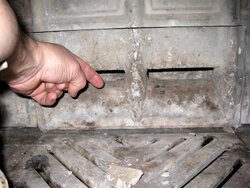I have a Lopi Leyden, which I have been told has the same system as the VC everburn.
So my question:
What is in that ceramic port (combustion brick) in the back of the stove? - Or supposed to be in it?
I stuck a vacuum hose in and pulled out chunks of ash (seems like ash), I do not know what kinda ash, but it's in hard compact form.
is this normal, should I get all this ash stuff out?
I have no idea what to do with this thing.
Thanks
So my question:
What is in that ceramic port (combustion brick) in the back of the stove? - Or supposed to be in it?
I stuck a vacuum hose in and pulled out chunks of ash (seems like ash), I do not know what kinda ash, but it's in hard compact form.
is this normal, should I get all this ash stuff out?
I have no idea what to do with this thing.
Thanks



